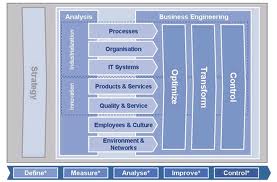Six Sigma Software
Six Sigma Software is a set of tools and strategies for process improvement originally developed by Motorola in 1986.Six sigma became well known after Jack Welch made it a central focus of his business strategy at General Electric in 1995,and today it is used in different sectors of industry.
Six sigma software seeks to improve the quality of process outputs by identifying and removing the causes of defects and minimizing variability in manufacturing and business processes.It uses a set of quality management methods, including statistical methods, and creates a special infrastructure of people within the organization who are experts in these very complex methods.Each six sigma project carried out within an organization follows a defined sequence of steps and has quantified financial targets .
The term six sigma originated from terminology associated with manufacturing,specifically terms associated with statistical modeling of manufacturing processes. The maturity of a manufacturing process can be described by a sigma rating indicating its yield or the percentage of defect-free products it creates. A six sigma process is one in which 99.99966% of the products manufactured are statistically expected to be free of defects , although, as discussed below, this defect level corresponds to only a 4.5 sigma level. Motorola set a goal of six sigma for all of its manufacturing operations, and this goal became a byword for the management and engineering practices used to achieve it.
Application
Six sigma mostly finds application in large organizations.An important factor in the spread of six sigma was GE's 1998 announcement of $350 million in savings thanks to six sigma, a figure that later grew to more than $1 billion.According to industry consultants like Thomas Pyzdek and John Kullmann, companies with fewer than 500 employees are less suited to Six Sigma implementation, or need to adapt the standard approach to make it work for them.This is due both to the infrastructure of Black Belts that Six Sigma requires, and to the fact that large organizations present more opportunities for the kinds of improvements Six Sigma is suited to bringing about.
In healthcare
Six Sigma strategies were initially applied to the healthcare industry in March 1998. The Commonwealth Health Corporation (CHC) was the first health care organization to successfully implement the efficient strategies of Six Sigma.Substantial financial benefits were claimed, for example in their radiology department throughout improved by 33% and costs per radiology procedure decreased by 21.5%;Six Sigma has subsequently been adopted in other hospitals around the world.
Critics of Six Sigma believe that while Six Sigma methods may have translated fluidly in a manufacturing setting, they would not have the same result in service-oriented businesses, such as the health industry.
